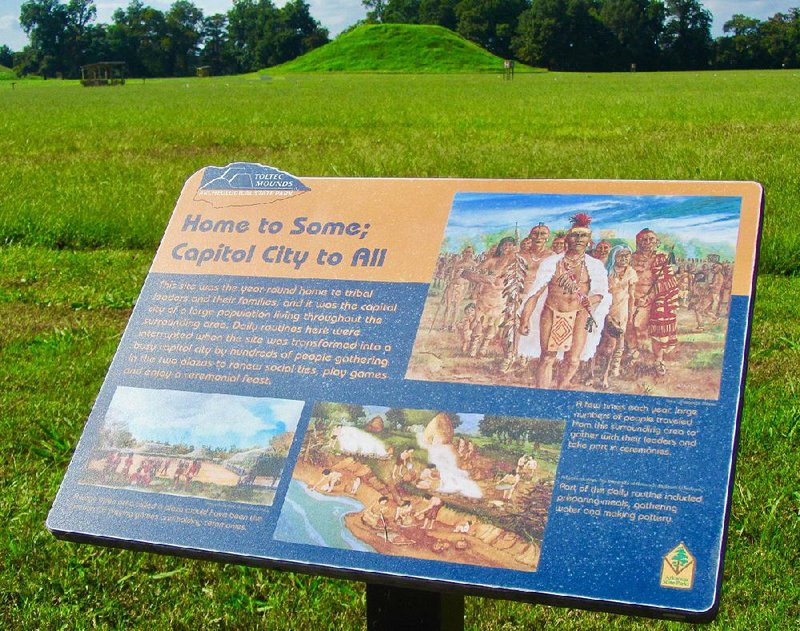You'd be wrong to think that every old Arkansas property of even slight interest is listed on the National Register of Historic Places. But your suspicion would have some merit. The Natural State boasts a dizzying total of more than 2,600 such honorees, among the 90,000-plus nationwide.
If you're looking for much more exclusive prestige, the list to consult is the one devoted to National Historic Landmarks. Arkansas has just 17 such properties among the U.S. total of 2,500. Their status is the highest given by the National Park Service, short of being a national park, though some properties are ranked in both categories.
The ultra-elite designation of National Historic Landmark may seem arbitrary or idiosyncratic in some cases, given that other sites on the National Register of Historic Places would seem as deserving or more so of the special status.
But the federal park service has the final word on naming National Historic Landmarks. Its criteria include sites where events of national historic significance occurred, places where prominent people lived or worked, icons of ideals that shaped the nation, outstanding examples of design or construction, places characterizing a way of life, or archaeological sites able to yield information.
For road trippers fascinated by the past, here are the state's dozen federally labeled National Historic Landmarks located beyond metropolitan Little Rock, with the reasons for their being cited:
• Arkansas Post National Memorial, near Gillett. The first semi-permanent European settlement in the Lower Mississippi Valley in 1686 and the first territorial capital of Arkansas in 1819-1821.
• Bathhouse Row, Hot Springs. Largest collection of vintage bathhouses in the United States and the only federally run spa.
• Beginning point of the Louisiana Purchase Land Survey, at the junction of Lee, Phillips and Monroe counties. Point from which the lands bought in the Louisiana Purchase of 1803 were later surveyed.
• Camden Expedition Sites, spanning seven counties: Clark, Cleveland, Grant, Hempstead, Nevada, Ouachita, Pulaski. Eight Civil War locations: Old U.S. Arsenal, Elkin's Ferry, Prairie De Ane Battlefield, Confederate State Capitol at Old Washington State Park, Poison Springs Battlefield, Fort Southerland and Fort Lookout, Marks' Mills Battlefield, Jenkins Ferry Battlefield.
• Centennial Baptist Church, Helena-West Helena. Site of preaching by Elias Camp Morris and unofficial headquarters for National Baptist Convention.
• Eaker Site, near Blytheville. Evidence of prehistoric Nodena populations along with Quapaw occupation.
• Fort Smith National Historic Site. The remains of two 19th-century U.S. military forts and the federal court for the Western District of Arkansas.
• Menard-Hodges Site, administered as part of Arkansas Post National Memorial. Two large prehistoric mounds and several house mounds plus remains of 17th-century French trading post.
• Nodena Site, Mississippi County. Important Late Mississippian cultural entity dating from about 1400-1700.
• Parkin Indian Mound, Cross County. Late Mississippian and protohistoric palisaded village with one mound, possibly the town of Casqui mentioned by 16th-century explorer Hernando de Soto.
• Rohwer Relocation Center Memorial Cemetery, Desha County. Site of World War II Japanese-American internment camp.
• Toltec Mound State Archeological Park, Lonoke County. One of the most significant remnants of American Indian life in Arkansas.
The other five National Historic Landmarks are in Little Rock or North Little Rock, so central Arkansans can stop by with just a brief drive. They include the house of civil-rights leader Daisy Bates; Little Rock Central High School; the Old State House; the house of Joseph Taylor Robinson, Arkansas governor and U.S. senator, and the USS Hoga tugboat, a survivor of the 1941 Pearl Harbor attack.
More information about National Historic Landmarks in Arkansas and elsewhere is available by visiting nps.gov.
Style on 10/23/2018
